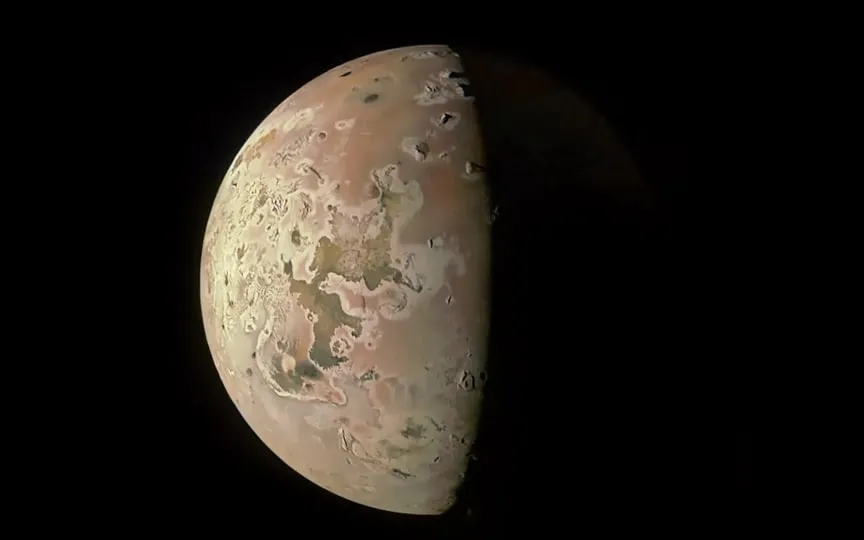Date for historic encounter between NASA’s Juno spacecraft and Jupiter’s volcanic moon Io announced
Get ready for an extraordinary event in space as NASA’s Juno spacecraft gets ready to meet Jupiter’s fiery moon, Io, in an unprecedented manner on Saturday, December 30. This encounter, happening at a distance of only 930 miles (1,500 kilometers) from Io’s turbulent surface, is the closest any spacecraft has come to the moon in more than twenty years. It is expected to provide a wealth of revolutionary information.
The scientific charge is led by Juno’s principal investigator Scott Bolton of the Southwest Research Institute in San Antonio, Texas, who expects a wealth of insights into Io’s volcanic dynamics. “By combining data from this flyby with previous observations, the Juno science team will study how Io’s volcanoes vary,” explains Bolton. The team aims to unravel the mysteries of Io’s eruptions – how often they occur, their intensity, the fluidity of the lava flows and their connection to the charged particles of Jupiter’s magnetosphere.
This daring flyby is just the first act, with another very close encounter planned for February 3, 2024, when Juno will again approach within 930 miles (1,500 kilometers) of Io’s surface. The spacecraft has been diligently monitoring Io’s volcanic activity from various distances, providing unprecedented views of the moon’s poles and conducting close passes of the other Jupiterian moons, Ganymede and Europa.
“Through our close flybys in Christmas and February, Juno will investigate the source of Io’s massive volcanic activity, whether there is a magma ocean beneath its crust, and the significance of Jupiter’s tidal forces relentlessly squeezing this tortured moon.” Bolton confirms.
Juno is entering its third year of extended mission and aims to uncover the secrets of Jupiter’s origin. The spacecraft will not only study Io, but also study the ring system that houses some of Jupiter’s inner moons. During Io’s flyby, all three Juno cameras are operational:
1. Jovian Infrared Auroral Mapper (JIRAM): Collects heat signals from Io’s volcanoes and calderas.
2. Stellar Reference Unit: Captures the highest resolution images of Io’s surface to date.
3. JunoCam Imager: Provides visible light color images.
This Dec. 30 flyby will mark Juno’s 57th orbit around Jupiter, during which the spacecraft and its resilient cameras will endure one of the harshest radiation environments in the Solar System. Specifically, NASA predicts that Io’s pull will change Juno’s orbit, shortening it from 38 days to 35 days after this flyby. Another close encounter is coming up in February, and Juno’s orbit is set to shrink to a further impressive 33 days. The cosmos is ready to reveal its secrets one orbit at a time.




